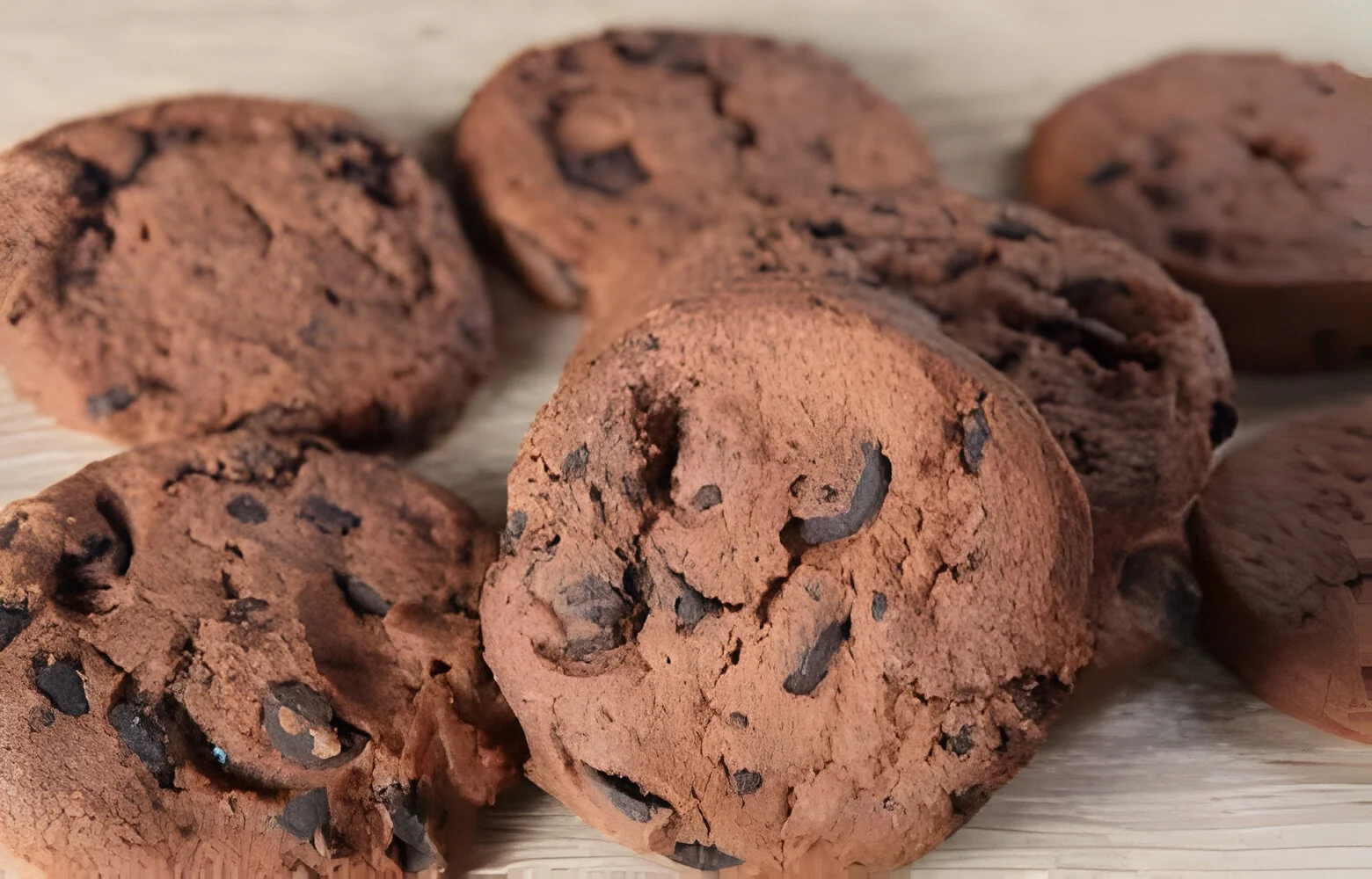Table of Contents
Ever wondered why Tollhouse cookies always flat despite following the recipe to the letter? You’re not alone. Many bakers find themselves puzzled by cookies that spread too thin. This article will dive deep into the common culprits behind flat cookies and provide you with actionable tips to ensure your cookies come out perfectly fluffy every time. Let’s get to the bottom of this baking mystery and turn your next batch into a delightful treat!
Introduction to Cookie Challenges
Understanding Ingredients and Measurements
Baking is as much an art as it is a science. The right balance and precise measurements are key to avoiding the all-too-common flat Tollhouse cookie. This section will explore the critical role ingredients play in the texture and spread of your cookies.
Flour – The Foundation
Flour isn’t just a filler; it’s the backbone of your cookies. If your flour measurement is off, your cookies might just fall flat—literally. Measuring flour by scooping it directly from the bag with a measuring cup can lead to using too much, as the flour often compacts. This can result in cookies that are too dense. On the flip side, not enough flour can lead to a dough that’s too wet, spreading out too much during baking and resulting in flat cookies.
To achieve the perfect measure, always spoon the flour into your measuring cup and level it off with a knife. This ensures you get just the right amount every time, keeping your cookies from becoming the dreaded cookie puddles.
Sugar Dynamics
Sugar isn’t just about sweetness; it affects the texture and spread of your cookies. Using too much white sugar can cause your cookies to spread too much, as it melts and encourages spreading. Brown sugar, on the other hand, holds more moisture and helps keep the cookies thicker and chewier.
Balancing the sugar types according to what texture you desire is key. For fluffier Tollhouse cookies, consider tweaking the sugar ratio slightly towards more brown sugar, ensuring it blends perfectly with the butter.
The Butter Effect
The consistency of butter is pivotal. Room temperature butter is ideal for creating a creamy and aerated base when creamed with sugar. If the butter is too cold, it won’t cream properly, leading to less air in the dough, which means less rise. Too warm, and it’ll cause your cookies to spread into flat discs before they even have a chance to bake.
Chilling your dough can also help, especially if you’re working in a warm kitchen. By refrigerating the dough, the butter firms up, reducing the rate at which it melts and spreads in the oven. A cool trick to remember!
Proper Measurement Techniques
Precision is paramount in baking. Ensuring you measure your ingredients accurately is the first step toward cookie success. Let’s explore how you can nail the measurements every time to ensure that your Tollhouse cookies don’t end up always flat.
How to Measure Ingredients Correctly
Measuring dry ingredients requires a delicate touch. Indeed, for ingredients like flour, the spoon-and-level method is your best ally. Firstly, scoop the flour into your measuring cup using a spoon and then level it off with a straight edge, making sure to avoid any compaction. This technique prevents the common mistake of adding too much flour, which can lead to tough, dense cookies.
Furthermore, for ingredients like sugar and baking powder, it’s crucial that you use the exact measurements specified in the recipe. Even slight deviations can significantly affect how your cookies rise and spread. Therefore, precise measurement is not just a recommendation; it’s a necessity to ensure your baking results in perfect cookies every time.
Tools for Accurate Measurement
Investing in a kitchen scale could be a game-changer for your baking. Weighing your ingredients eliminates the guesswork and provides the most accurate and consistent results. Especially for Tollhouse cookies, where the balance of dry to wet ingredients is crucial, a kitchen scale ensures you get it right every time.
Baking Techniques and Equipment
Oven Temperature and Baking Sheets
The right oven temperature and the quality of your baking sheets can dramatically affect the outcome of your cookies. Let’s explore how you can master these elements.
Oven’s Role in Cookie Baking
An often overlooked aspect of baking cookies is the oven temperature. If the oven is too hot, the butter in the cookie dough will melt too quickly, causing the cookies to spread before they have time to set. Conversely, an oven that’s not hot enough will not set the edges of the cookies quickly enough, which also leads to spreading.
To avoid these issues, always preheat your oven for at least 20 minutes before baking to ensure it reaches the right temperature. Consider investing in an oven thermometer to check the accuracy of your oven’s settings. This small tool can make a big difference in ensuring your cookies don’t turn out flat.
Baking Sheets and Cookie Spreading
Not all baking sheets are created equal. Darker sheets tend to absorb more heat, which can cause the bottoms of your cookies to cook faster than the rest, leading to uneven baking and excessive spreading. Opt for lighter-colored baking sheets to promote even baking.
Cool your sheets between batches. A hot baking sheet can start melting the cookie dough before it even begins to bake, which you guessed it—leads to flatter cookies. Rinse them under cold water to quickly cool them down, dry thoroughly, and then they’re ready for the next batch.
Adjusting these baking techniques and equipment settings can have a profound impact on the quality of your Tollhouse cookies. By controlling these variables, you ensure your cookies have the best chance to rise and remain fluffy, just as they should be.
Recipe Tips and Tricks
Recipe Adjustments
Adjusting your recipe can make all the difference in preventing those Tollhouse cookies from turning into flat, disappointing discs. Let’s break down some essential modifications you can try.
Modifications to Prevent Flat Cookies
If you find your cookies are consistently flat, it might be time to consider tweaking your recipe slightly. Here are a few adjustments to consider:
- Reduce the Sugar: Too much sugar can cause your cookies to spread too much. Try reducing the sugar by a small amount, or experiment with the ratio of white to brown sugar, increasing the brown sugar for its moisture-retaining properties.
- Increase the Flour: Adding a bit more flour can give your cookie dough more structure and reduce spreading. Be careful not to add too much, though, as this can make your cookies tough.
- Adjust Leavening Agents: Sometimes, playing around with the amount of baking soda or baking powder can help. If your cookies are spreading too much, reducing the baking soda a little can decrease the spread.
Experimenting with Chilling Dough
Chilling your cookie dough can have a significant impact on the texture and spread of your cookies. By chilling, you solidify the fat in the dough, which helps prevent the cookies from spreading too quickly when they hit the hot oven.
- Short Chill: Even chilling the dough for 30 minutes to an hour can make a noticeable difference.
- Long Chill: For even better results, try refrigerating your dough overnight. This not only helps with the spread but also enhances the flavors in your cookies.
Testing different chilling times can help you find the perfect balance for your specific oven and recipe.
Taking your cookie baking from good to great involves a deeper understanding of the ingredients and their interactions. Here are some professional tips to help you achieve the perfect cookie texture.
Professional Tips for Achieving the Perfect Cookie Texture
- Creaming Method: Properly creaming butter and sugar until light and fluffy is crucial. This process incorporates air into your dough, helping to leaven the cookies as they bake.
- Ingredient Temperatures: Ensure all your ingredients, especially butter and eggs, are at room temperature unless otherwise specified. This helps them mix more thoroughly and react chemically as intended.
When to Tweak Ingredient Proportions
Understanding when and how to adjust ingredient proportions can make a big difference:
- Butter: If you’re in a warmer climate, you might find reducing the butter slightly can help maintain cookie structure.
- Flour Types: Experiment with different types of flour. For example, using half bread flour and half all-purpose flour can give your cookies a chewier texture and help them hold their shape better.
- Mix-Ins: Adding mix-ins like nuts or chocolate chips can also affect how your cookies bake. These add-ins can add structure and prevent the cookies from spreading too much.
These advanced tips are designed to help you refine your baking process and understand the small changes that can lead to big improvements in your Tollhouse cookies. Armed with these strategies, you’re well on your way to baking perfection!
Frequently Asked Questions
Let’s tackle some of the most common questions bakers have about Tollhouse cookies and provide straightforward, practical advice to prevent your Tollhouse cookies from always being flat.
Why do my cookies go flat even when I follow the recipe exactly?
Even if you’re sticking to the recipe, several factors like oven temperature, ingredient quality, and measurement accuracy can affect the outcome. To avoid Tollhouse cookies always flat, ensure your oven is correctly calibrated—a common issue—measure your ingredients precisely, and consider the freshness of your leavening agents, as they lose potency over time.
How can I keep my cookies from spreading too much?
To prevent your Tollhouse cookies from always being flat, try chilling your dough before baking, use parchment paper on your baking sheets, and make sure not to overcrowd your baking space so heat circulates evenly. Additionally, check that your baking powder and soda are active; they are crucial for keeping the cookies puffed up.
What’s the best way to measure flour to prevent flat cookies?
For the most accurate measurement to avoid Tollhouse cookies always being flat, using a kitchen scale is highly recommended. Moreover, if you prefer using measuring cups, start by fluffing your flour with a spoon. Subsequently, gently spoon it into your measuring cup, and then carefully level it off with a knife without packing it down. This approach ensures you don’t add too much flour, which can make your cookies stiff and dense. Therefore, by adopting these precise measuring techniques, you greatly enhance your chances of achieving the perfect cookie texture every time.
Can I use melted butter instead of softened butter for my cookies?
Using melted butter will lead to flatter, crispier cookies because it doesn’t allow the sugar to cream and trap air. For thicker, chewier cookies, stick with softened butter. If you must use melted butter, consider increasing the flour slightly or chilling the dough longer to counteract the spreading and prevent Tollhouse cookies always flat.
Is there a difference in using brown sugar vs. white sugar in cookies?
Yes, brown sugar contains more moisture and molasses, which can lead to chewier and thicker cookies. White sugar melts faster and can cause cookies to spread more. Adjusting the ratio of brown to white sugar can help control the texture and spread of your cookies, helping to avoid the issue of Tollhouse cookies always being flat.
How long should I chill my cookie dough?
Chilling time can vary based on the recipe and your taste preference, but a good rule of thumb is at least 30 minutes. For thicker, more flavorful cookies, you can chill the dough overnight. This allows the flavors to meld and the dough to firm up, reducing spread during baking and helping to prevent Tollhouse cookies from always being flat.
Direct Advice and Additional Tips
Here are some additional tips that might help you achieve the perfect Tollhouse cookies:
- Experiment with Different Oven Racks: Baking on the middle rack provides the most even heat distribution, but you might find that adjusting the rack position helps achieve better results based on your specific oven.
- Check Your Pans: Light-colored or shiny pans can help prevent the bottoms of your cookies from getting too dark. Dark pans can absorb more heat and lead to overbrowned bottoms.
- Use Quality Ingredients: High-quality vanilla extract, fresh spices, and good-quality chocolate can make a significant difference in the overall taste of your cookies.
- Keep Your Cookie Size Consistent: Use a cookie scoop to ensure all your cookies are the same size; this helps them bake evenly and finish at the same time.
For more detailed insights on achieving baking perfection, consider visiting King Arthur Baking’s Guide to Measuring Flour correctly. This guide provides excellent advice and visual aids to help ensure you’re measuring flour the right way, every time.
Moreover, for additional recipes and tips on improving your baking skills, check out the range of articles and guides available at OperaCook, where you can dive deeper into the art of perfect baking.
Final Thoughts and Wrapping Up
As we conclude our comprehensive guide on preventing Tollhouse cookies always flat, it’s essential to remember that baking is both a science and an art. The precision in measurement and understanding the properties of each ingredient plays a critical role in the success of your Tollhouse cookies. Here are some final thoughts and tips to keep in mind:
Embrace Experimentation
Each kitchen is different, and what works in one might not work in another due to variables like humidity, altitude, and equipment. Don’t be afraid to experiment with small adjustments to find what works best in your baking environment. Make notes of what changes you make and how they affect the outcome, so you can replicate your successes and learn from any mishaps. This hands-on approach can prevent your Tollhouse cookies from always being flat.
Stay Organized and Patient
Baking is more enjoyable and less stressful when you have all your ingredients prepped and ready to go. Mis en place, a French culinary phrase which means “putting in place,” can be a game-changer. Also, remember that patience is key—rushing the creaming of butter and sugar, or skipping the chilling of dough, can lead to Tollhouse cookies always flat.
Keep Learning
The world of baking is vast and ever-evolving. Stay curious and continue learning. There are countless resources online, from blogs and forums to full-fledged online courses that can help you refine your baking skills. Join communities, share your experiences, and learn from others who share your passion for baking.
The Joy of Sharing
Finally, remember that baking is about more than just the final product. It’s about the joy of creating something with your own hands, the aroma filling your kitchen, and the smiles when you share your creations with others. Whether your Tollhouse cookies come out perfectly or not, the act of baking and sharing them is a rewarding experience in itself.
By keeping these tips in mind and applying the techniques and knowledge shared in this guide, you’re well on your way to baking perfect Tollhouse cookies and other treats. Keep practicing, keep learning, and most importantly, keep enjoying the delicious journey of baking!
Thank you for following along with this guide. May your Tollhouse cookies always be as fluffy and delightful as you intend them to be! Happy baking!





